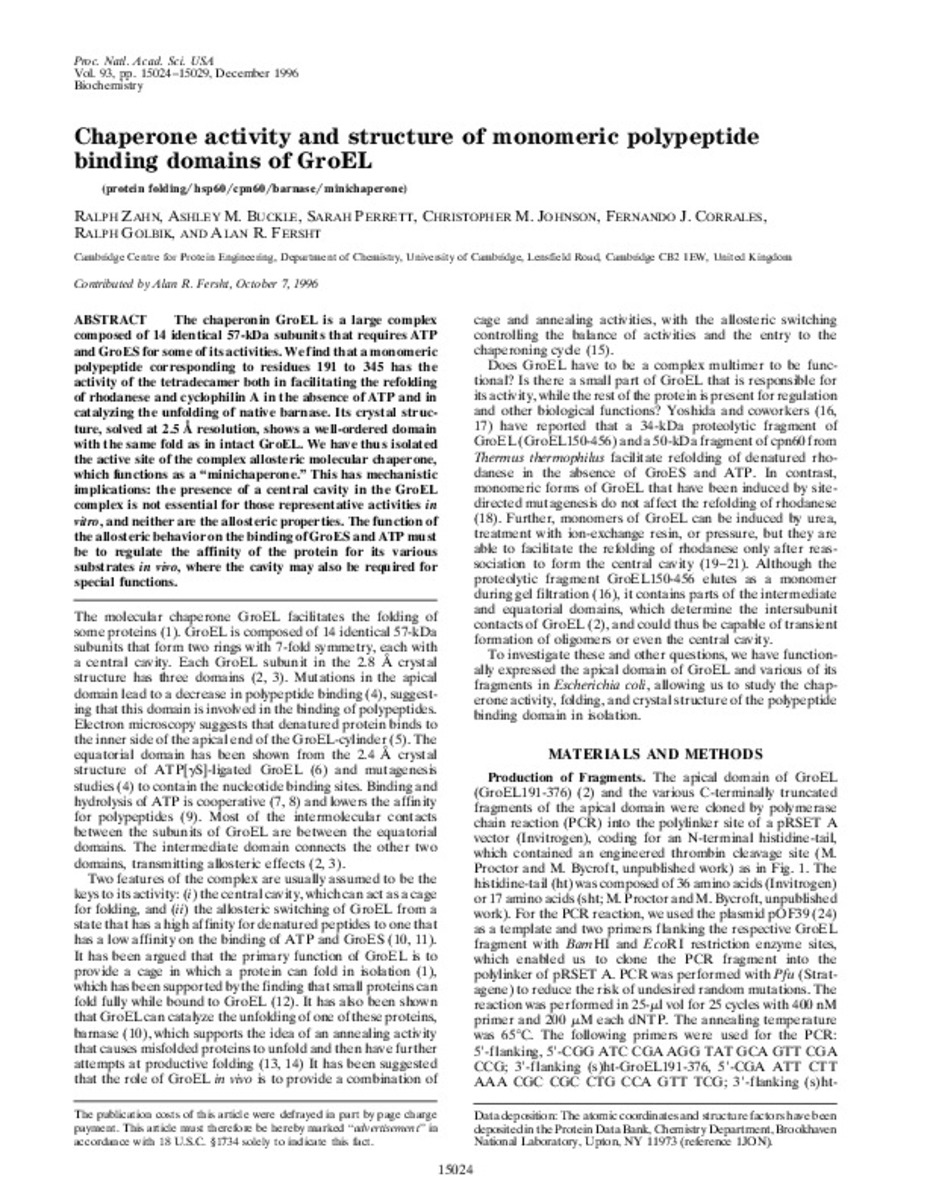Chaperone activity and structure of monomeric polypeptide binding domains of GroEL
Palabras clave :
Amino Acid Isomerases/chemistry
Carrier Proteins/chemistry
Chaperonin 60/chemistry
Chaperonin 60/metabolism
Protein Folding
Protein Structure, Secondary
Fecha de publicación :
1996
Editorial :
National Academy of Sciences
Cita:
Zahn R, Buckle AM, Perrett S, Johnson CM, Corrales FJ, Golbik R, et al. Chaperone activity and structure of monomeric polypeptide binding domains of GroEL. Proc Natl Acad Sci U S A 1996 Dec 24;93(26):15024-15029.
Aparece en las colecciones:
Estadísticas e impacto
0 citas en

0 citas en

Los ítems de Dadun están protegidos por copyright, con todos los derechos reservados, a menos que se indique lo contrario.







